ESMED General Assembly Program
Day 1 - Online
Track 1
Keynote Session
Caring for COVID-19 Patients
Trends in Oncology
Advancements in Diabetes
Trends in Mental Health
Public Health
The Future of Surgery
Advancements in Medical Genetics
Psychology & Psychiatry
Track 2
Trends in Cardiology
Next Generation Neurology
Dentistry
Nutrition & Food Science
Trends in Internal Medicine
Advancements in Medical Education
Urology
Track 3
Keynote Session
Nursing & Healthcare Management
The Future of Pharmacology
Pulmonology
Ophthalmology & Optometry
Epidemiology
Radiology
Bioinformatics
Geriatric Medicine
Hepatology
Immunology
Infectious Disease
Obstetrics
Pain Management
Pediatrics
Day 2 - Berlin
Track 1
Keynote Session
The Future of Pharmacology
Public Health & Epidemiology
Advancements in Medical Genetics
Advancements in Pathology
Track 2
Keynote Session
Next Generation Neurology
Trends in Oncology
Physiology
Dentistry
Day 3 - Berlin
Track 1
Keynote Session
Injuries Associated with Police Use of Force
Advancemetns in Medical Education
Nursing & Healthcare Management
Geriatric Medicine
Pediatrics
Psychology & Psychiatry
Trends in Infectious Disease
Radiology
Track 2
Keynote Session
Trends in Internal Medicine
Mental Health
Nutrition & Food Science
Ophthalmology & Optometry
Preventative Medicine
The Future of Surgery
Immunology & Immunotherapy
Cardiology
The Future of Pulmonology
Day 1 - Online
Keynote Session
Online
Date:
August 19
Time:
09:00 CET

First-trimester GDM diagnosis: Implications for fetal programming
Brian Koos, David Geffen School of Medicine at UCLA
Abstract
Gestational diabetes mellitus (GDM) predisposes the fetus in later life to obesity, type 2 diabetes, and cardiovascular disease. Aberrant conditioning of fetal metabolism by GDM appears to be a root cause of the predilection of these disorders. Current GDM diagnosis protocols generally delay therapeutic interventions until the last quarter of pregnancy. The lack of accurate diagnostic tests has forestalled determining whether normalizing maternal metabolic milieu in early pregnancy reduces offspring morbidity. A preliminary study now indicates that reliable first-trimester diagnosis of GDM is achievable (Am J Obstet Gynecol 2021;224:215e1-7). This prospective case-control study of 46 each of GDM and normal gravidas has revealed that metabolic disruptions consistent with insulin resistance are identifiable at a mean of 12 weeks’ gestation and that a subset of seven of these urinary metabolites accurately predicted (96.7%) GDM versus normal gravidas. Validation of the model by a larger study will enable 1) early noninvasive GDM diagnosis, and 2) future investigations to establish to what extent normalizing the maternal metabolic milieu in the first trimester reduces GDM prevalence, perinatal morbidity, and disruptions of fetal programming involved in the increased prevalence of serious medical disorders.

Building the evidence for telehealth use in family planning
Terri Ann Thompson, Ibis Reproductive Health
Caring for COVID-19 Patients
Online
Date:
August 19
Time:
10:00 CET

Immunity Passports, Privacy, and Discrimination
Inigo de Miguel Beriain, University of the Basque Country

A One Health Perspective on Coronaviruses
Laura Kahn, Princeton University

Ordinary Research in Extraordinary Times: The hidden cost of Covid to human participant research
Ruth Walker, University of Waikato, New Zealand
Abstract
The ethical review process is an obligatory stage of the human participant research pipeline. Along with researchers themselves, ethics committees have had to adapt rapidly to the new and constantly changing research environment brought about by Covid-19 and governmental responses to it. From the perspective of an ethicist serving on a such a committee it is clear that researchers at all stages of their careers face largely hidden costs as they attempt to pursue their normal research agendas. The growing literature on the impact of the pandemic on research does not yet contain a fine-grained examination of the effects on the ethical review of ordinary research, that is, research unrelated to Covid-19. This paper identifies some of the costs imposed on researchers as a result of the policies adopted by New Zealand to combat the pandemic and the role of the ethics committee in reducing them to the best of its ability. The paper contends that the effects on researchers’ careers will be felt long after the pandemic is brought under control and mitigation of these effects should be a priority for institutions that employ human participant researchers.

The impacts of COVID-19 across occupational groups
Evangelia Demou, University of Glasgow

Pathophysiological comparison and management of COVID-19 and influenza in Japan
Masafumi Seki, Tohoku Medical and Pharmaceutical University
Abstract Infection with severe acute respiratory syndrome coronavirus 2 (SARS-CoV-2), which causes coronavirus disease 2019 (COVID-19), has become a historic pandemic, and dealing with it is one of the most important aspects of infectious disease treatment today. SARS-CoV-2 has been found to have characteristic and powerful infectivity (ability to propagate) and lethality (severity). With influenza, primary influenza pneumonia from the virus itself is known to exist in addition to secondary bacterial pneumonia. With COVID-19, on the other hand, it is important to provide diagnosis and treatment while keeping acute respiratory distress syndrome and pulmonary edema (alveolar flood) from a similar cytokine storm, as well as severe angiopathy, in mind. The importance of complying with hand hygiene and masks in infection control remains the same as in previous general infection control measures and responses to influenza virus infections and others, but recently, vaccination will likely be the key to infection control in the community in Japan. |
Trends in Oncology
Online
Date:
August 19
Time:
10:00 CET
Rapid induction of colon tumors in mice exposed to a colon mutagenic non-carcinogen, benzo[a]pyrene and a colitis-inducer, dextran sulfate sodium
Atsushi Hakura, Global Drug safety, Eisai Co., Ltd.
Treatment patterns and outcome for Stage T4b urothelial cancer of the bladder
Waqar Haque, Houston Methodist Hospital
Abstract Purpose: Management of cT4b bladder cancer is poorly defined; national guidelines recommend chemotherapy (CT) alone or chemoradiation (CRT). Using a large, contemporary dataset, we evaluated national practice patterns as well as associated outcomes, especially with respect to radical cystectomy (RC) and CRT versus CT alone. |
New Insights in Anti-Prostate Cancer Therapy by Estrogen Analogs
Yuan-Shan Zhu, Weill Cornell Medicine

Report of Objective Clinical Responses of Cancer Patients to Pharmaceutical-grade Synthetic Cannabidiol
Dr Julian Kenyon
Complexity, diversity and homogeneity measures in the evaluation of tumor aggressiveness in prostate cancer; a revision of the concept
Przemyslaw Waliszewski, Complexity Research Inc., Poznan, Poland
Photoacoustic flow cytometry for prediction of metastasis in early stage patients
John Viator, Duquesne University
Cancer cells hijack RNA processing to transform cell architecture inside and out
Katherine Borden, Institute for Research and Immunlogy, University of Montreal

An Update on Risk and Prognostic Factors for Brain Tumors with a focus on sex and racial/ethnic differences
Jill Barnholtz-Sloan, Case Western Reserve University School of Medicine & University Hospitals of Cleveland
Genetic and Genomic Advances In Breast Cancer, Diagnosis, and Treatment
Tammy Walker-Smith, Texas A & M University- Corpus Christi
Solid-pseudopapillary neoplasm of the pancreas: more questions than answers
Attila Zalatnai
Abstract
| Although the solid-pseudopapillary neoplasm of the pancreas is a clearly descriptive diagnosis, but the origin, the exact biological behavior, the correct assessment of the prognosis, all of these are still poorly defined. Therefore, it serves a challenge both for clinicians, and pathologists. In the presentation we aim to comprehensively outline the features of this enigmantic tumor. |
A role for bone marrow derived cells in cutaneous malignancy
Rebecca Morris, The Hormel Institute/University of Minnesota
Advancements in Diabetes
Online
Date:
August 19
Time:
10:00 CET

Digital Tools in Diabetes Care
Lutz Heinemann
Negative Pressure Therapy in the diabetic foot
Silva Garcia
Trends in Mental Health
Online
Date:
August 19
Time:
10:00 CET
Opioid medication discontinuation and the risk of adverse opioid-related events
Tami Mark
Public Health
Online
Date:
August 19
Time:
10:00 CET
Healing touch for both sides: Analyzing the complex issues responsible for the rapid decline in public trust on doctors in India
Kunal Saha, People for Better Treatment (PBT)
Population health and climate change: present and future risks
Kristie Ebi, University of Washington, USA
Health Justice at the Intersection of Class and Race: The Roles of Socioeconomic Deprivation, Whiteness, and Mortality Trends in Low Education White People
Erika Blacksher, Center for Practical Bioethics, Inc.
Human Subjects Research Ethics and Oversight: Recent Developments in the United States
Elisa Hurley, Public Responsibility in Medicine and Research
Significance of diet on uranium intake and potential health hazards
Silvia Haneklaus, Julius Kuehn-Institute
Abstract Uranium (U) causes significant health effects in both humans and animals. U may damage biological systems through its chemical toxicity as well as its radioactivity, with the chemical toxicity perceived as the primary health hazard and the effects from U’s ionizing radiation being of secondary concern. The main health concerns in humans with respect to U are renal, developmental, reproductive, DNA and brain damage as well as diminished bone growth. U is ubiquitously abundant in the environment, but significant amounts of U are applied on agricultural soils with mineral phosphorus fertilizers. U is either taken up by crop plants, accumulates in soils or is discharged into water bodies by run-off and leaching. The daily intake of U with solid food varies only slightly. It is lowest with a mixed standard diet (1.3 µg/day U) and highest with a vegan diet (2.0 µg/day U). It is the U content of tap and mineral water which determines the total U intake (1.7 – 7.1 µg/day U). Dietary habits have changed as natural food has been increasingly replaced by processed and convenience products, which are treated with food phosphates. However, food phosphates may contain U among a variety of other heavy metals. The average daily phosphorus intake of humans doubled to 1000 mg/day in the last 20 years resulting in a widespread oversupply with this nutrient. This also adds on an average 0.6 µg/day U to the solid food if the P surplus is attributed exclusively to the consumption of food phosphates. An oversupply with phosphorus is supposed to amplify the negative health effects of U especially on kidney function. |
The Future of Surgery
Online
Date:
August 19
Time:
10:00 CET
Transverse components of multi-strand core sutures: The impact on 4-strand and 6-strand tendon repairs
Ya Fang Wu
Arthroscopic Transosseous Suture Without Implant for Rotator Cuff Tears
Shigehito Kuroda, Matsudo Orthopaedic Hospital
Day Surgery and surgical waiting time
Paula Maria Costa Caldinhas, IHMT, UNL
Abstract
| Surgical waiting time remains an important issue regarding access to health care provision. It is considered to be excessive in most OEDC countries (over twelve weeks or ninety days). The development of day surgery has been one of the strategies that proved effective in reducing surgical waiting time. This study aims to establish a correlation between surgical waiting time and the percentage of day-surgery cases, in hospitals with surgical services, in the Portuguese National Health Services, during 2006. Methodology: An observational, analytical and ecological study was conducted to establish the correlations existing between surgical waiting time and the percentage of day-surgery procedures realized, as well as associations with other variables, through multivariate and correlation analysis. Results: A negative, statistically significant Spearman’s correlation was observed between the percentage of day-surgery cases and the waiting surgical time for elective procedures. |
Perioperative considerations related to cutaneous surgery
Hillary Johnson-Jahangir, University of Iowa Health Care
Mutations and Management of Multifocal Neck Paragangliomas
Gregory Basura, The University of Michigan
Abstract
| A large proportion of head and neck paragangliomas (HNPGL) arise in patients with a genetic predisposition due to pathogenic variants in succinate dehydrogenase (SDHx) genes. Clinical approaches to tumor diagnosis, genetic analysis, medical, surgical and non-surgical management of these tumors is rapidly evolving. The goal of this presentation is to review the anatomic location, diagnosis and management of these tumor with particular emphasis placed on the role of genetic evaluation and peri-operative and medical management. Medical and surgical providers who care for patients with HNPGs must be aware of the current approaches for diagnosis, imaging and indications for universal referral for genetic testing and the clinical impact of pathogenic SDHx variants in patients with HNPGL. |
Advancements in Medical Genetics
Online
Date:
August 19
Time:
10:00 CET
Polynucleotide ruthenium organometallic compounds induce DNA damage identified by human NER factor XPC
Steven Shell, The University of Virginia’s College at Wise
Abstract Ruthenium organometallic compounds represent an attractive avenue in developing alternatives to platinum-based chemotherapeutic agents. While evidence has been presented indicating ruthenium-based compounds interact with isolated DNA in vitro, it is unclear what effect these compounds exert in cells. Moreover, the antibiotic efficacy of polynuclear ruthenium organometallic compounds remains uncertain. In this study we report that exposure to polynuclear ruthenium organometallic compounds induces recruitment of damaged DNA sensing protein Xeroderma pigmentosum Group C (XPC) into chromatin-immobilized foci. Additionally, we observed one of the tested polynuclear ruthenium organometallic compounds displayed increased cytotoxicity against human cells deficient in nucleotide excision repair (NER). Taken together, these results suggest that polynuclear ruthenium organometallic compounds induce DNA damage in cells, and that cellular resistance to these compounds may be influenced by the NER DNA repair phenotype of the cells. |

Genomic translocations, super-enhancer hijacking and oncogene activation: from characterisation to therapeutic targeting
Lisa Russell, Newcastle University
Insights Into Gene Regulation Using a Phosphate Analogue
Elizabeth Frayne, University of Phoenix; Frayne Consultants
Development of DNA related technologies - Micro-biopsy system for site-specific tissue analysis
Hideki Kambara, Frontier BioSystems, Inc
Abstract Genome information is quite important for medicine. Now we can use various tools for getting genome information. The development of the tools can be divided into 5 stages. The 1st stage; from autoradiography to automated DNA sequencers. The 2nd stage; high throughput DNA sequencers for the Huma Genome Project. The 3rd stage; DNA analysis for medical applications. The4th stage; ensemble approach to single object approach (single-cell analysis). The 5th stage; site-specific tissue analysis. The site-specific tissue analysis is important to understand tissue functions. We have developed a micro-biopsy system for tissue analysis. It has a spinning narrow hollow punching needle to obtain micro-dissections having diameters of 0.05-0.2mm from any types of tissue samples placed on a petri dish or a slide glass. The details of the system together with a result of site-specific gene expression analysis will be presented. |
Genetics of Wilson's disease and Wilson-like phenotypes
Carmen Espinós, Centro de Investigación Príncipe Felipe
mRNA expression of MDR3 gene in the blood of preterm infants with parenteral nutrition-associated cholestasis
XIUFANG Yang
Psychology & Psychiatry
Online
Date:
August 19
Time:
10:00 CET
Aeromedical Retrieval of Acute Psychiatric Patients
Jodie Mills
Abstract
| The aim of this study was to review the characteristics of acute psychiatric patients requiring aeromedical retrieval across the Top End of the Northern Territory (NT), to assess the sedation requirements and incidence of in-flight complications, and to review the optimal flight crew composition required for safe retrieval. Retrospective data was collected for all psychiatric patients retrieved by CareFlight Aeromedical Retrieval Service for the Top End of the Northern Territory of Australia over a 12-month period between 1st February 2012 and 31st January 2013. 262 patients were retrieved using fixed-wing transport, 90% were indigenous with a male: female ratio of 1.45:1. Mean age was 31yrs. 5% of patients were under the age of 18. 81% of retrievals occurred during the day averaging approximately 4 hours 40 minutes. A flight doctor was tasked with a flight nurse to retrieve 79% of patients. 89% of patients received sedation in the healthcare centre prior to flight, while 39% of total patients required further in-flight sedation. Eight patients required intubation before transport. 4% of patient’s developed hypotension with the use of Propofol. This review highlights the characteristics of psychiatric patients retrieved by an aeromedical retrieval service in the NT of Australia. The majority of patients retrieved had a background psychiatric history and also a history of violence. Given the nature of the retrieval and the risk to crew and aircraft, a flight doctor was tasked on a high number of cases. The complication rate was negligible. |
Psychosocial Vital Signs - Enhancing Holistic Assessment
Charlotte M. Spade-Goldstein, Most recently: Regis University, Loretta Heights School of Nursing; Denver, CO, USA
Abstract
| Psychosocial Vital Signs (PVS), an assessment tool designed for initial and periodic assessment of psychosocial variables of health, measures a patient’s perception, sense of situational support, coping, and anxiety experienced during health status change or crises. Universal vital signs and those commonly used in specialized arenas of care (Fetal Heart Rate) measure variables in the physiological dimension of human response giving a quick view of a patient’s health status. PVS assessment enhances that quick view by gathering data from cognitive, affective, behavioral, and spiritual dimensions of human response. PVS also facilitates pertinent dialogue between patient/client and health care clinician as the patient self-reports subjective experience and the clinician makes objective observations. This presentation offers a review of the conceptual basis of the PVS Tool, its purposes, methodology in teaching and learning how to use it, as well as its merits as a reliable to for enhancing holistic patient assessment. While components of the tool are examined, possible themes of patient responses during PVS assessment are explored and patient-centered clinician responses are suggested. Closing Questions propose continuing development of the PVS tool as well as furthering research on the concept of psychosocial variables of health as defined are essential vital signs. Participants will receive handouts that include copies of the PVS Assessment Tool and a Thematic Algorithm which may be reprinted as desired or needed. |
Trends in Cardiology
Online
Date:
August 19
Time:
10:00 CET
Heart Center Service Line: Focus on Quality
Larry Markham, Riley Hospital for Children at Indian University Health
Development of an algorithm for ruling-out non-ST elevation myocardial infarction in the emergency department using high sensitivity troponin T assay
Rosanna Falbo, ASST Brianza - P.O. di Desio

Mastication Steal Syndrome - An rare and unusual presentation of cerebrovascular occlusive disease
Kevin Taubman, Indiana University School of Medicine - South Bend; Beacon Health System

Impact of Endovascular Technologies on Treatment of Aortic Pathologies
Rodney White, MemorialCare Long Beach Heart & Vascular Institute
Abstract
| The development of endovascular technologies has revolutionized the treatment of abdominal and thoracic aortic lesions over the last 20 years. Endovascular stent therapy has changed the treatment of many vascular lesions by enabling minimally invasive interventions, reducing the morbidity and mortality and availability of treatment to patients who were previously felt to be too high-risk for surgical repair. The technology began with treating abdominal and a iliac artery aneurysms, and has rapidly expanded to descending aortic pathologies including aneurysms and dissections. Newer endografts are being evaluated to treat ascending and arch pathologies with prototypes developing to combine aortic valve and ascending aortic lesions. Simultaneous development of hybrid endovascular interventional suites has combined conventional x-ray imaging and evolving 3-dimensional overlay displays enabling branch grafts to reconstruct the aortic arch and visceral branch arteries. The expanding utilization of endograft repairs has also created challenging reinterventions as endografts alter, but do not prevent continuing degeneration, elongation and dilation of the remaining aorta. Issues regarding repeated x-ray exposure and contrast utilization with renal compromise challenges ongoing surveillance of endograft repairs. |

Risk factor management in cardiovascular and oncologic medicine: Cigarette smoking cessation using the concept of harm reduction - New Evidence
Martin Storck, Dept. Vascular and Thoracic Surgery, Klinikum Karlsruhe

Emerging targets in cardiometabolic disease: LncRNA regulation of vascular senescence and atherosclerosis
Mark Feinberg, Harvard Medical School
Next Generation Neurology
Online
Date:
August 19
Time:
10:00 CET
Inherent environmental adaptivity of the Alzheimer peptide as a prerequisite for fibril formation
Maria Ott, Martin-Luther-University Halle
Exploring regeneration at the interface of implanted electrodes in the brain
Erin Purcell, Michigan State University
Management of acute seizures in children: A review with special consideration of care in resource-limited settings
Ornella Ciccone, Istituto Serafico di Assisi
Cell-type specific signatures in the brain and the development of selective and restrictive expression systems to treat CNS pathologies
Nicole Déglon, Lausanne University Hospital
The Study of Genetic Susceptibility and Mitochondrial Dysfunction in Mesial Temporal Lobe Epilepsy
Liwen Wu, Hunan Children's Hospital
Abstract
| The aim of this study is to investigate the mitochondrial dysfunction and pathogenic role of the mitochondrial genome in the progression of mesial temporal lobe epilepsy (MTLE) in vivo and in vitro. Mitochondrial DNA (mtDNA) and nuclear DNA were detected in the hippocampal samples and peripheral blood of patients with MTLE. Mitochondrial functions were detected in vivo and in vitro. In 20 patients with MTLE, mtDNA mutations involving single or multiple deletions in the hippocampus were found in 5 patients but were not detected in the peripheral blood. Two patients carried pathogenic mutations of RELN, both in the hippocampus and blood. A pathogenic mutation of DNA2 was found in the hippocampus of the 2 patients with multiple deletions but not in the blood samples. The mtDNA copy numbers showed dynamic changes in the MTLE models. In MTLE patients, low metabolism in mesial temporal lobe and hippocampus was observed by using PET-CT. Under electron microscope, the mitochondrial cristae were disordered, the density of mitochondrial matrix decreased and even vacuolated in the hippocampus neurons. In the MTLE rat models, there were dynamic changes in mitochondrial morphology; the ATP production rate decreased in the acute phase, the latent phase, and the chronic phase. Mitochondrial enzyme complex I activity decreased in both acute and chronic phases, and there was no significant difference in latent period. Decreased mitochondrial membrane potential and calcium homeostasis were detected in the epileptic cell models. We first identified somatic mutations in mtDNA in MTLE patients and comprehensively evaluated mitochondrial dysfunction in the pathogenesis of MTLE in vivo and in vitro. This evidence supports the environmental and modifying genetic interactions that contribute to the development of MTLE. |
Clinical applicability of gait analysis in the early detection of cognitive decline
Tine Roman de Mettelinge
The Epileptic Baboon: How “Good” a Model is it for Genetic Generalized Epilepsy in Humans?
Charles Szabo, UT Health San Antonio
The role of interleukin-1 (IL-1) signal in epilepsy and epilepsy-induced sleep disruptions
Fang-Chia Chang, National Taiwan University
Abstract
| The baboon became a focus of scientific interest about half a century ago, when Dr. Robert Naquet recognized it to be a model for photosensitive epilepsy. At that time, photosensitivity provided a potent phenotype for invasive electrophysiological studies and a potential platform for the testing of anti-seizure medications. However, technological development, which included improved experimental instrumentation and manipulation of mice and rodents, largely replaced the baboon, which was available to only a few centers and expensive to purchase and maintain. As the largest baboon pedigree was housed at the Southwest Primate National Research Center (SNPRC) in San Antonio, Texas, which included some founder animals with epilepsy, we learned that there was more to the baboon model than just photosensitivity. The baboons also exhibited spontaneous convulsions, mainly upon awakening. We were able to characterize a genetic generalized epilepsy in the pedigree, with the baboons demonstrating myoclonic, absence and generalized tonic-clonic seizures, and generalized ictal and interictal epileptic discharges on scalp electroencephalography. We electroclinically phenotyped over 700 pedigreed baboons, developed a neuroimaging platform using functional PET and MRI, and more recently identified a susceptibility gene, RBFOX1, associated with the epilepsy. While the epileptic baboon will probably not evolve into a widely utilized model for epilepsy research, partly because of its limited availability, cost and ethical considerations, we will demonstrate its utility for the testing of neurostimulation devices, genetic and neuroimaging studies, but also its value to study epileptogenesis or sudden unexpected death in epilepsy (SUDEP). |
Dentistry
Online
Date:
August 19
Time:
10:00 CET
Why Practicing Medicine Professionally is So Complicated: Comparing Medicine’s and Dentistry’s Central Practice Values
David Ozar, Emeritus Professor, Philosophy, Loyola University Chicago, and Consultant, Institutional Ethics Committee, NorthShore University Health System, Evanston Illinois, U.S.A.

Effects of 10% Carbamide Peroxide on tooth shade, Plaque Indes (PI), and Gingival Index (GI) during Invisaligh treatment.
Dalia Seleem, Western University of Health Sciences, College of Dental Medicine .
Nutrition & Food Science
Online
Date:
August 19
Time:
10:00 CET
Green‑banana biomass consumption by diabetic patients improves plasma low‑density lipoprotein particle functionality
Antonio Martins Figueiredo Neto, University of São Paulo, Institute of Physics .
Abstract
| The aim of this study was to investigate the effects of 6-months consumption of green-banana biomass on the LDL particle functionality in subjects with type 2 diabetes. Subjects (n = 39, mean age 65 years old) of both sexes with diabetes (HbA1c ≥ 6·5%) were randomized to receive nutritional support plus green-banana biomass (40 g) (n = 21) or diet alone (n = 18) for 6-months. Non-linear optical responses of LDL solutions from these participants were studied by Z-scan technique. UV– visible spectrophotometer was used to measure the absorbance of the LDL samples. Small Angle X-ray Scattering and Dynamic Light Scattering experiments were used to look for any structural changes in LDL samples and to determine their size distribution. The Lipoprint test was used to determine the LDL sub-fractions in terms of distribution and size. Consumption of green-banana biomass, reduced total- (p = 0.010), non-HDL-cholesterol (p = 0.043), glucose (p = 0.028) and HbA1c (p = 0.0007), and also improved the protection of the LDL particle against oxidation, by the increase in carotenoids content in the particles (p = 0.007). This higher protection against modifications may decrease the risk of developing cardiovascular disease. These benefits of the green-banana biomass encourage the use of resistant starches with potential clinical applications in individuals with pre-diabetes and diabetes. |
Trends in Internal Medicine
Online
Date:
August 19
Time:
10:00 CET
Reactivating Glucose Oxidative Krebs Cycle Signaling Promotes Sepsis Survival
Charles McCall, Wake Forest University Medical School .
Patient directed music listening to manage complex symptoms of critically and mechanically ventilated patients
Annie Heiderscheit, Augsburg University .
Evolution of Hyperkalemia Management: A Focus on New Emerging Therapies
Kristy Greene, Emory University Hospital .
Advancements in Medical Education
Online
Date:
August 19
Time:
10:00 CET
An Evaluation of Educational Interventions Aimed at Preparing Medical Students for Discharge Summary Writing: A Rapid Review of the Literature
Haider Merchant
The Art and Science of Nurse Coaching for Health Care Transformation
Dr. Mary Elaine Southard
Implementation of adult learning principles: ownership vs compliance
Mark nelson
Cognitive Biases: the final frontier in patient safety and medical education
Thomas Yuen, Crozer Family Medicine Residency
Abstract
| Cognitive biases are mental shortcuts based on limited information taken in order to make decisions efficiently. Oftentimes in our everyday lives these quick decisions serve us well. In other arenas however, especially in the medical setting- cognitive biases can lead to medical errors and negative consequences for patients and providers. Despite advances in EMR technology and medicine’s recent cultural emphasis on patient safety, human errors in medicine still abound. This lecture will review the basics of what cognitive biases are, how they impact our practice of medicine, and most importantly: what are the implications for how we train future healthcare providers? |
Review of reflection in simulation-based learning
Sissel Eikeland Husebø, University of Stavanger
Abstract
| Reflection has been identified to be the most important condition for learners to benefit from simulations. The comprehensive use of the concept of reflection leaves us with the impression that the concept is well understood in healthcare simulation. A closer examination, however, reveals that this is hardly the case. Therefore, the purpose of this presentation is to develop a more comprehensive understanding of the notion of reflection to provide simulation facilitators with debriefing strategies that foster learners’ reflection. For this purpose, various philosophical and theoretical sources are considered including Dewey, Husserl, Bengtsson, among others. Commonalities in terminology, definitions, antecedents, context, process, outcomes, and strategies to foster reflection are addressed. The implications of the findings for simulation-based learning are explained. |
Urology
Online
Date:
August 19
Time:
10:00 CET
Robot Assisted Laparoscopy: The new standard in Urology
Hubert John
Nursing & Healthcare Management
Online
Date:
August 19
Time:
10:00 CET
Examining the Phenomenon of the Administrative Burden in Health Care
Albert Heuer, Rutgers University
Abstract
| The confluence of regulatory requirements, risk management considerations and internal policies have placed a considerable emphasis on clinician documentation and other similar duties. Though important, these administrative responsibilities now appear to account for a significant portion of the workload on those providing direct patient care. This presentation which is based on a careful review of the related literature describes the history and evolution of the phenomenon of the healthcare administrative burden and details major implications, including the paradox that documentation and reporting requirements intended to enhance patient care may actually detract from it. Key strategies to mitigate the downside of the administrative burden will also be reviewed along with some key resources for those interested in learning more about this topic. |
The Art and Science of Nurse Coaching for Health Care Transformation
Helen Erickson, Integrative Health Consulting and Coaching
Direct assessment for measuring institutional effectiveness in allied health professions
Jodi Olmsted, University of Wisconsin~Stevens Point
Nurses (not) in public policy
Ada Jacox, University of Maryland, professor emerita
Regulating health apps - an international outlook
Anna Essen, House of Innovation, Stockholm School of Economics
What was I Thinking? Are You Distracted or Focused?
Lynn Desmond, Univeristy of Massachusetts Dartmouth
SELF-DETERMINATION ACT: ARE WE ACHIEVING PATIENT EXPECTANCIES?
Elba Zurdo, University of Barcelona
The Future of Pharmacology
Online
Date:
August 19
Time:
10:00 CET
The Human Metabolome Protects Against Exogenous Endocrine Disrupters
Christopher J. Borgert, C.E.H.T, University of Florida, Dept. of Physiological Sciences, and Applied Pharmacology and Toxicology, Inc. Gainesville, FL, USA
The Changing Toxicity of PM2.5 During a Period of Significant Emission Reductions
Philip Hopke, Clarkson University and University of Rochester School of Medicine and Dentistry
Abstract
| Over the past decade, policy initiatives to improve air quality have been implemented nationwide and in New York State (NYS). These measures included the lowering of the sulfur content of on-road and non-road diesel and home heating fuels, use of particle regenerative traps to capture diesel emissions, and nitrogen oxide controls, actions to reduce sulfur dioxide (SO2) and nitrogen oxide (NOx) emissions from power plants in upwind source areas (i.e. Cross-State Air Pollution Rule), and Ontario going carbon-free in electricity generation between 2009 and 2014. Additionally, economic changes have also led to changes in emissions. These changes included the recession of 2008 that resulted in a general decrease in economic activity and thus lower emissions, and a dramatic decline in the price of natural gas that displaced coal as a fuel for electricity generation. Thus, many coal-fired power plants have been closed including those in western NY. With NYSERDA funding, we examined whether there were changes in PM concentration and composition, and then further examined their association with cardiovascular and respiratory hospitalizations and emergency department visits before, during, and after these air quality policies and economic changes. We also investigated sources of PM2.5 across the state (Buffalo, Rochester, Albany, Queens, Bronx, and Rochester) and identified ten PM2.5 sources at six urban sites in NYS. We then examined associations between these same health outcomes and these PM2.5 sources. These analysis help understand the increases in the observed toxicity per unit mass of PM2.5 over time. |
The ribosome as a potential therapeutic target
Dianne Ford, Northumbria University
Therapeutically targeting metabolic vulnerabilities in ER+ breast cancer
Todd Miller, Geisel School of Medicine at Dartmouth
Undelying social and geographical factors of the development of synthetic cannabinoids use in Mayotte island.
Agnes Cadet-Tairou, French Monitoring Centre for Drugs and Drug Addiction (OFDT)
A single question, multiple answers: how do we assess the value of orphan drugs for rare diseases?
Steven Simoens, KU Leuven
Abstract
| In order to account for the specific characteristics of orphan drugs and rare diseases, decision-makers are increasingly adapting their reimbursement processes and have implemented value assessment frameworks that aim to balance standard efficiency criteria such as cost-effectiveness with additional criteria such as disease severity and unmet medical need. Such value assessment frameworks include traditional economic evaluation, weighted quality-adjusted life years, modified incremental cost-effectiveness ratio threshold, and multi-criteria decision analysis. The objective of this presentation is to critically discuss these various value assessment frameworks and to illustrate them by referring to examples of orphan drug frameworks implemented in European jurisdictions. |
Therapeutic Bispecific Antibodies: overview, mechanisms and drug development pipeline
Paul Parren, Lava Therapeutics and Leiden University Medical Center
Abstract
| Landmark advances in the engineering and development of bispecific antibodies (bsAb) are enabling unprecedented versatility in therapeutic antibody concepts. Currently more than 20 different commercialized technology platforms are available for bsAb creation and development, two bsAbs are marketed and over 85 are in clinical development. A defining bsAb feature is their potential for novel functionalities — that is, activities that do not exist in mixtures of the parental or reference antibodies. |
A Pharmacist-run Anabolic Osteoporosis Clinic
Michael Kane, Albany Medical Center
Pulmonology
Online
Date:
August 19
Time:
10:00 CET
Long-Term Outcomes of a Preoperative Lung Resection Smoking Cessation Program
Joseph Phillips, Dartmouth-Hitchcock Medical Center and The Geisel School of Medicine at Dartmouth
Abstract
| Smoking cessation programs for cancer patients suggest 6-month quit rates between 22-40%, and 1-year rates of 33%. We sought to investigate the long-term outcomes of an intensive, preoperative smoking cessation program in patients undergoing lung resection. All identified active smokers were advised to quit and encouraged to meet with a certified tobacco treatment specialist (TTS) by the thoracic surgeons. This session will review data regarding the implementation, short-term and long-term outcomes (6, 12, and 24 months) of an intensive preoperative smoking cessation program for lung resection with demonstrated high initial, mid- and long-term success rates. Based on these findings, we conclude that the preoperative period, particularly one centered around lung cancer, is an effective time for smoking cessation intervention and can lead to a high rate of cessation lasting at least 2 years following surgery. |
Noninvasive respiratory management of ventilatory pump failure
John Bach, Rutgers University
Memory-type pathogenic Th2 (Tpath2) cells in airway inflammation
Toshinori Nakayama, Chiba University
Abstract
| To develop more effective vaccines and strategies to regulate chronic inflammatory diseases, it is important to understand the mechanisms underlying the generation and maintenance of immunological memory. In 2011, we identified a highly pathogenic IL-5-producing memory Th2 (Tpath2) cell subset in allergic eosinophilic airway inflammation (Endo et al. Immunity, 2011). The IL-33/ST2 axis has been shown to be important for the induction of Tpath2 cells (Endo et al. Immunity, 2015). Based on these data, we propose a new model called “Pathogenic Th population disease induction model” in the pathogenesis of Th1/Th2/Th17 diseases (Endo et al. Trends in Immunology, 2014, Nakayama et al. Ann. Rev. Immunol. 2017). We extended the study and identified a fibrosis inducing pathogenic Th2 cell subset (Morimoto et al. Immunity 2018). Asthma is a chronic allergic inflammatory disease with airway remodeling including fibrotic changes. We found that IL-33 enhanced Amphiregulin production by ST2high memory Th2 cells. The analysis of polyps from patients with eosinophilic chronic rhinosinusitis revealed fibrosis with accumulation of Amphiregulin-producing CRTH2highCD161highCD45RO+CD4+ Th2 cells and Osteopontin-producing eosinophils. More recently we found that CD69hiCD103low CD4+ TRM cells produced effector cytokines and promoted the inflammation and fibrotic responses induced by chronic exposure to Aspergillus fumigatus. Simultaneously, immunosuppressive CD69hiCD103hiFoxp3+ CD4+ regulatory T (Treg) cells were induced. We introduce the experimental evidence that lung tissue-resident CD4+ T cells play crucial roles in the pathology of chronic lung inflammation, and CD103 expression defines pathogenic effector and immunosuppressive tissue-resident cell subpopulations (Ichikawa et al. Nat. Imm. 2019). |
Disease Trajectory and Health Outcomes: COPD as an Example
Kwua-Yun Wang
Ophthalmology & Optometry
Online
Date:
August 19
Time:
10:00 CET
Why do kids get cataract? Fishing for answers in the genome.
Kathryn Burdon, University of Tasmania
Decoding AMD: Race and Pigmentation to Solve the Puzzle
Brian McKay, University of Arizona
Abstract
| Age-related macular degeneration (AMD) occurs more frequently in Caucasians than any other race. We hypothesize that this relates to the innate level of pigmentation. One of the tissues intimately involved in the development and progression of AMD is the retinal pigment epithelium (RPE). The RPE is a pigmented epithelial monolayer that provides critical support for the neurosensory retina. Loss of RPE support function, underlies several blinding diseases, including AMD. How RPE pigmentation might relate to retinal degeneration in an adult is unknown. Albinism, the lack of pigmentation, results in a clear retinal disease phenotype that occurs early during development, but the visual defects are developmental, not degenerative. Further complicating the issue, is that in ocular albinism, the RPE accumulates pigment normally, but the retinal disease occurs anyway. Thus, it’s not simply RPE pigmentation associated with the retinal albinism disease phenotype. The mutation that causes ocular albinism occurs in the gene encoding GPR143, a G-protein coupled receptor expressed in the RPE. We discovered that the ligand for GPR143 is L-DOPA, a by-product of pigment synthesis. With this discovery we brought the diverse forms of albinism into a single common pathway, because each form of albinism causes a loss of GPR143 signaling. We tested our hypothesis that GPR143 signaling influences AMD incidence, by evaluating patients prescribed L-DOPA for movement disorders. Using three nonoverlapping electronic medical record databases, we identified 15,252,985 people with proven access to ophthalmology care and determined the relative risk of developing AMD and age of disease onset in these patients. Our results demonstrated that those prescribed L-DOPA had a reduced risk of ever developing AMD, and if they did, the age of onset was delayed by 8 years. Based on these findings, a prospective clinical trial was designed to evaluate whether those with neovascular AMD (nAMD) benefitted from L-DOPA. In those with newly diagnosed nAMD, L-DOPA delayed the necessity of intravitreal anti-VEGF injections, reduced retinal fluid accumulation by 29% and improved vision by 5.0 letters at one month. In patients that were previously being treated with anti-VEGF injections, L-DOPA reduced the number of necessary injections by 52% and increased vision by 4.8 letters at 6 months of treatment. In summary, our results indicate that L-DOPA activation of GPR143 in the RPE, has a beneficial effect in the prevention and treatment of AMD. |
HYDROGEN SULFIDE-RELEASING COMPOUNDS AND PHARMACOTHERAPY OF GLAUCOMA
Sunny Ohia
Epidemiology
Online
Date:
August 19
Time:
10:00 CET
Carcinogenesis as a side-effect of medications -- can epidemiology hellp to assess causation?
Alexander Walker, World Health Information Science Consultants
Abstract
| The “classic” examples of cancers that resulted from drug therapy were based on longer-term follow-up. Endometrial cancer following unopposed estrogens or adenocarcinoma of vagina in the offspring of mothers treated with diethystilbesterol were instances in which the temporal patterns of occurrence could help with the constructions of mechanistic hypotheses. The older successful examples may not very helpful as paradigms for the study of more recently introduced agents, except in bringing us back to mechansim of action. The lecture will examine cancer incidence following drug exposure under various mathematical models of carcinogenesis, and speak to whether observational data in the absence of pathophysiological theories can provide strong evidence. (The answer is yes, but rarely.) |
HIV-1 subtype CRF63_02A epidemic in Russia
Mariya Sivay, State Research Center of Virology and Biotechnology 'Vector'
Radiology
Online
Date:
August 19
Time:
10:00 CET
Image-Guided Brain Radiosurgery: Past, Present and Future
Lijun Ma, UCSF School of Medicine
Nutcracker phenomenon and syndrome: high prevalence and practical imaging diagnosis
Seung Hyup Kim, Seoul National University Hospital, K-Radiology Clinic
Bioinformatics
Online
Date:
August 19
Time:
10:00 CET

Experimental Design, Power analysis, and Sample Size Estimation for Omics Research
Yu Shyr, Vanderbilt University Medical Center
Geriatric Medicine
Online
Date:
August 19
Time:
10:00 CET
Malignant (necrotizing) externa otitis: the experience of a single hyperbaric centre
Carla Amaro
Hepatology
Online
Date:
August 19
Time:
10:00 CET
The effects of omega 3 on non-alcoholic fatty liver disease
Katie Morgan, The University of Edinburgh
Immunology
Online
Date:
August 19
Time:
10:00 CET
COVID-19 Vaccines, Viral Mutants, Immunological Responses
Margaret Liu, ProTherImmune
Toxic Epidermal necrolysis-like acute cutaneous lupus erythematosus: three cases successfully treated with etanercept
Didona Biagio, Istituto Dermopatico dell'Immacolata IDI-IRCCS-Roma
Infectious Disease
Online
Date:
August 19
Time:
10:00 CET
Bridging Knowledge Gaps: Real-World Evidence Studies in the Treatment of Bacterial Infections
Mark Redell, Melinta Therapeutics
Biofilm Associated Legionella pneumophila in Drinking Water Systems
Helen Buse, US Environmental Protection Agency
Angiotensin (Ang-1-7) Protects Against Overzealous Pulmonary Inflammation During Mycoplasma Pneumoniae Infection While Promoting Pathogen Clearance
Julie Ledford
Obstetrics
Online
Date:
August 19
Time:
10:00 CET
Building Stronger Team and Enhancing Patient Safety in Obstetrics Through In Situ Simulation
Michelle Morais, McMaster University
Abstract
| Objective: Simulation is increasingly valued as a learning tool in obstetrical practice. In situ simulation assesses the hands-on and critical thinking skills of a health care team within their clinical setting. We aimed to create an in situ simulation program to promote skills acquisition, enhance teamwork, and identify system limitations. Methods: Key obstetrical emergencies were identified through a needs assessment. In situ simulations were developed to address these clinical presentations. During simulations, organizers and participants identified latent safety threats. Medical management was evaluated through comprehensive emergency-specific checklists. Leadership attitudes were assessed using the modified Perinatal Emergency Team Response Assessment tool. Following each simulation, team members were debriefed, and qualitative and quantitative feedback was solicited and aggregated by specialty and discipline. Results: Simulations were conducted monthly at two academic centers over 14 months. Participation was interdisciplinary, including learners, staff physicians, nursing, and allied health team members from the departments of obstetrics, anesthesia, emergency medicine, and neonatology. Participants reported their involvement was enjoyable. Participants reported improvements in communication skills, content knowledge, and procedural knowledge. Participants favourably rated the spontaneity of simulations, clinically relevant scenarios, safe environment, and use of realistic equipment. Latent safety threats, related to equipment, medication, personnel, resources, and technical skills, were identified. Conclusion: We present the successful implementation of a comprehensive in situ simulation program. In situ simulation allows for deliberate practice of obstetrical emergencies and promotes a culture of patient safety. Lessons learned provide valuable data to identify limitations within our current practices and inform future policy change. |
Pain Management
Online
Date:
August 19
Time:
10:00 CET
The Patient Preferences About Serious Illness Instrument (PASI): An Innovation in Eliciting Seriously Ill Patients’ Preferences
Phyllis Whitehead, Carilion Clinic
Pediatrics
Online
Date:
August 19
Time:
10:00 CET
Growth in children following treatment for childhood cancer
Zoltan Antal
Abstract
| Childhood cancer survivors are exposed to a variety of treatment modalities which may affect their linear growth. In this session, we will review the diagnostic and treatment factors known to potentially impair growth in childhood cancer survivors and the expected growth outcomes following completion of therapy. |
The effects of parental separation on early development of left-behind children in rural China
Mengshi Li, Peking University
Use of NAVA in Neonates
Sherry Courtney, University of Arkansas for Medical Sciences
Day 2 - Berlin
Keynote Session
Online
Date:
August 19
Time:
10:00 CET
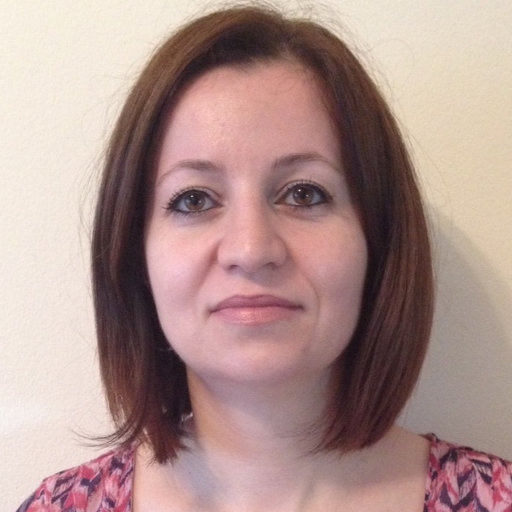
Trends in mortality rates from coronary heart disease in Republic of Serbia during the period 1990-2018: a joinpoint regression analysis
Isidora Vujcic, Faculty of Medicine University of Belgrade

Utilizing computational biophysical modeling to identify ion channel alterations in painful diabetic neuropathy patients
Erik Fransén, KTH Royal Institute of Technology

Genetics of arterial thrombosis . Interest in diagnosis check-up Thanks
Didier Jambou, UNCA-Laboratoire d'hématologie-Hôpital PASTEUR- Avenue de la voie tomaiine-06000-NICE-FRANCE

Cerebrospinal fluid – a clinical challenge but, still, a mystery
Nanna MacAulay, University of Copenhagen
Abstract
| A range of brain pathologies associate with elevated intracranial pressure due to brain fluid accumulation. Treatment options are limited to surgical procedures, which are entirely symptomatic, highly invasive and exclusively based on a traditional mechanical perception of the brain’s fluid dynamics, which fail to consider the molecular water transport mechanisms. Nanna MacAulay and her research group unravel mechanisms governing CSF secretion in health and disease with a vision of controlling brain fluid dynamics in pathophysiology. |

Leading quality improvement at scale
Sir John Oldham, Adj Prof Global Health innovation Imperial College London
Abstract
| In this session I will outline my experiential insights from over 20 years of leading and delivering large scale improvement programmes in healthcare in various countries. What are the “do’s and don’ts”. |
The Future of Pharmacology
Online
Date:
August 19
Time:
10:00 CET
Pharmacologic and Cortical Electrical Explorations to Enhance Recovery from Language and Motor Deficits Post Stroke
Delaina Walker Batson, The Stoke Center-Dallas, Texas Woman's University

Diazadispiroalkane derivatives - new viral entry inhibitors
Elke Bogner, Charité-Universitätsmedizin Berlin, Institute of Virology
Abstract
| Herpesviruses are widespread and can cause serious illness. Many currently available antiviral drugs have limited effects, result in rapid development of resistance and often exhibit dose-dependent toxicity. Especially for human cytomegalovirus (HCMV) new well-tolerated compounds with novel mechanisms of action are urgently needed. We investigated the antiviral effect of two small molecules (11826091 and 11826236) on HCMV infected human embryonic lung fibroblasts. Both substances were well tolerated and exhibited a strong dose dependent antiviral activity. Time of addition assays where 11826091 or 11826236 was added to cells before, before and during, during or after infection demonstrated an inhibitory effect on early steps Interestingly, 11826236 had an effect by addition to cells after infection. Detailed studies revealed that both small molecules block virus attachment but not penetration. Furthermore, the data suggest that these molecules cover the cell surface by binding to heparan sulfate thereby interfering with initial attachment. To test this further we extended our analyses to pseudorabies virus (PrV), a member of the Alphaherpesvirinae, which is known to use cell surface heparan sulfate for initial attachment via nonessential glycoprotein C (gC). While infection with PrV wild type was strongly impaired by 11826091 or 11826236 as with heparin, a mutant lacking gC was unaffected by either treatment demonstrating that primary attachment to heparan sulfate via gC is targeted by these small molecules. In summary, we demonstrate the high potency of 11826091 and 11826236 as new herpesvirus entry inhibitors. |

Adenylate cyclase toxin release in Bordetella pertussis via the cell envelope stress response
Tomoko Hanawa, Kyorin University School of Medicine

The use of conjugated drugs to rebuild or repair bone
Marc Grynpas, Sinai Health System/University of Toronto

Stimulations with scents, foods, L-carnosine and music affected physiological phenomena via changes in autonomic nerves innervating organs/tissues in rats and mice
KATSUYA NAGAI
Abstract
| In order to clarify roles of the autonomic nervous system in the controls of physiological phenomena, we determined changes in activities of autonomic nerves innervating organs/tissues and those of physiological phenomena in rats and mice. Consequently, following things were observed: 1) olfactory stimulations with scents of grapefruit and lavender oils reciprocally changed activities of sympathetic nerves innervating the white adipose tissue, brown adipose tissue, adrenal gland, pancreas, kidney and skeletal muscle, and the activity of the parasympathetic (vagus) nerve innervating the stomach, and inversely affected lipolysis, thermogenesis, the blood glucose level, the blood pressure, the skeletal muscle blood flow and appetite, 2) intestinal administrations of Lactobacilli changed activities of sympathetic nerves innervating the spleen, cutaneous artery, and the activity of parasympathetic (vagus) nerve innervating the stomach and intestine, and affected natural killer lymphocyte activity, cutaneous blood flow, appetite and intestinal peristalsis, 3) either peripheral or central administration of small amount of L-carnosine lowered the blood glucose and blood pressure in association with suppressions of the pancreatic efferent sympathetic nerve and that of the renal efferent sympathetic nerve, 4) auditory stimulation with the music of Traeumerei by Schumann suppressed the sympathetic nerve innervating the kidney and lowered the blood pressure. Furthermore, we obtained evidences of involvements of the master circadian clock, the hypothalamic suprachiasmatic nucleus, and histaminergic receptors, in these modulations of autonomic neurotransmissions and physiological phenomena. |

The knowledge support, Pharmaceuticals and Environment at janusinfo.se, offers opportunities to consider environmental aspects of medicines in use
Helena Ramstrom, Health Care Administration
Abstract
| Pharmaceuticals are one of the most important treatment options in health care and mean improved health for the treated individuals. However, certain pharmaceuticals also have an environmental risk. Studies have shown that ethinylestradiol leads to feminization of male fish, and oxazepam and citalopram can cause behavioral changes in fish. In Sweden, Region Stockholm has been working to reduce the environmental impact of pharmaceuticals since the beginning of the 2000s. To be able to focus on particularly environmentally harmful pharmaceutical substances, work on gathering environmental information commenced. This has resulted in a knowledge support, Pharmaceuticals and Environment, available at janusinfo.se in a Swedish and an English version. The database presents compiled environmental information for pharmaceutical substances for human use, primarily gathered from regulatory authorities and pharmaceutical companies. The knowledge support enables the Stockholm Drug and Therapeutics Committee, and other Swedish Drug and Therapeutics Committees to include the environmental aspect when recommending pharmaceuticals for health care providers. The presentation will focus on the database, its content, use, challenges and opportunities. |
Public Health & Epidemiology
Online
Date:
August 19
Time:
10:00 CET
A New Model in Public Health Systems Strengthening: Infrastructure as Essential Prerequisite for Improved Health Outcomes
Dennis Lenaway, Florida State University College of Medicine, Tallahassee, Florida, USA

The consequences of enrich environment versus stress along life span: a rat model
Avraham Raphael Avital, Faculty of Medicine,Technion - Israel Institute of Technology and Emek medical center
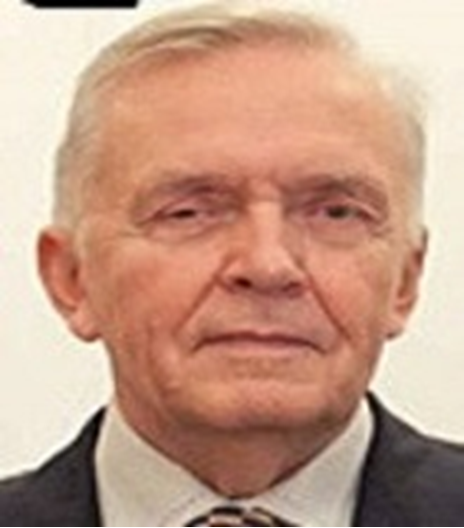
Agent-Based Models for Influenza Epidemic Dynamics and Its Decision Making Capability
Valeriy Perminov, BioTeckFarm
Abstract
| Agents-based models (ABMs) become more and more popular in applied mathematics. During last 15 years a large number of ABMs have been created and used in different scientific area (ecology, economy, epidemiology, human behavior to name a few), but in this paper, only ABMs for influenza epidemic/pandemic dynamics in cities are considered in detail. Based on a critical review of currently accepted ABMs of such special type new ABM has been proposed. Unlike the old ABMs, it can be used for analysis of efficiency and cost of all interventions (both for ones had been carried out before and during epidemic or pandemic under consideration and ones that could be implemented but had not been carried out for some reasons). Moreover, under some conditions, new ABM gives us an opportunity to analyze efficiency and cost of different interventions for future oncoming epidemics and to select its optimal combination. The second part of my lecture will be devoted to peculiarities of an application the ABM to pandemics in general and to pandemics similar to COVID-19 in particular. |
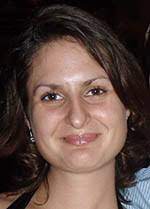
Work-related functioning among long-term sick-listed workers with persistent subjective health complaints
Kristel Weerdesteijn, Amsterdam Public Health research institute

Incorporating an equity framework from research to clinical practice
Quianta Moore, Rice University's Baker Institute for Public Policy
Advancements in Medical Genetics
Online
Date:
August 19
Time:
10:00 CET

Cascade screening models: what works and what does not?
Deborah J. Bowen, University of Washington

Advances in Single Cell Diagnostics
J. Paul Robinson

Genetics of head and neck carcinogenesis
David Kutler, Weill Cornell Medical Center
Advancements in Pathology
Online
Date:
August 19
Time:
10:00 CET

Specialization and generalism in Pathology: challenges for our training programs
Paul van der Valk, Department of Pathology, Amsterdam UMC, location VUMC, Amsterdam, The Netherlands
Pitfalls in Abdominal Radiology / Vascular Abdominal Pathology
David Busel
Pathological structure and symptomatic characteristics of visuospatial neglect
Noritaka KAWASHIMA, National Rehabilitation Center for Persons with Disabilities
Next Generation Neurology
Online
Date:
August 19
Time:
10:00 CET
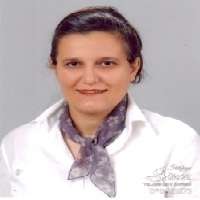
The place of metal homeostatic therapy in Alzheimer’s Disease: Preclinical and clinical studies
Emel Koseoglu, Erciyes University, Medicine Faculty

Hypoperfusion and cerebral vascular dysfunction in dementia
Seth Love, University of Bristol, UK
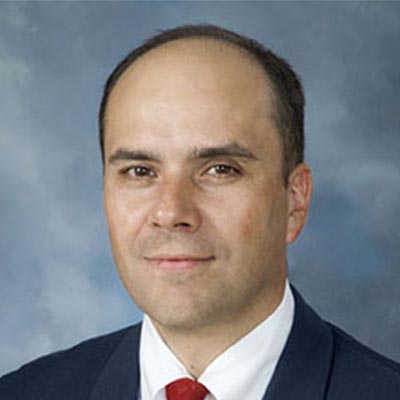
A single-center observational study of real-world use of andexanet alfa in patients with factor Xa inhibitor associated intracranial hemorrhage
Mauricio Concha, Sarasota Memorial Hospital
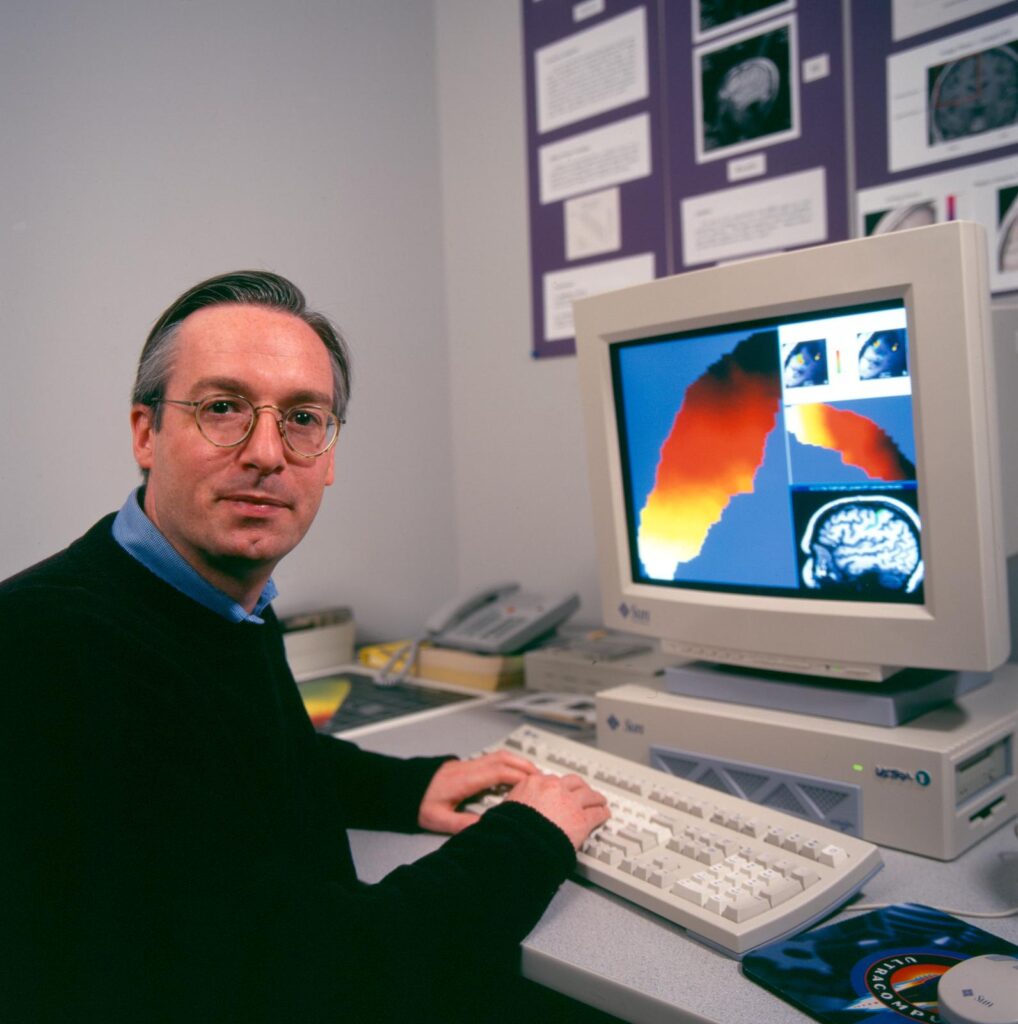
Probing the neural basis of perceptual phenomenology with the touch-induced visual illusion
Philip Servos, Wilfrid Laurier University
The study on self-stigma of patients with epilepsy and trial of psychoeducation program in Japan
Izumi Kuramochi, Saitama Medical Center, Saitama Medical University
Abstract
| Stigma is a common psychological consequence of chronic diseases, including epilepsy. The self-stigma is internalized of social stigma by patients, and the higher self-stigma caused decline self-esteem, and hindered for social adaptation and therapeutic behavior. “Epilepsy” is called “TENKAN” in Japanese and it has a negative meaning like “crazy” and “easy to get angry”. Since 2016, we have conducted a qualitative study on self-stigma in patients with epilepsy and clarified the content. In addition, from the results of study on related with epilepsy seizure frequency, seizure type and some questionnaire, the higher the seizure frequency patients have the stronger self-stigma, and the more depressive and less self-respecting in the focal seizure group. Furthermore, based on these results and the existing epilepsy stigma questionnaire, we make a new epilepsy self-stigma scale (ESSS) and its reliability and validity were examined. The new scale consists of 8 items and 3 factors, “stigma internalization”, “social incomprehension”, and “confidentiality”, and is constructed from correlation analysis with the Rosenberg self-esteem evaluation scale (RSES) and the Beck depression evaluation scale (BDI-Ⅱ) is confirmed. |

Childhood sexual abuse and its impact on adolescent brain structure
Mirjam Rinne-Albers, Leiden University
Abstract
| Abnormalities in brain structure and function have been regularly demonstrated in traumatised youth. This may be relevant in order to ultimately better understand the way childhood adversity may lead to an increased risk of psychiatric and somatic pathology in later life. To this end, an overview is presented of neuroimaging research in traumatized children, adolescents and young adults and the results of the Dutch EPISCA group of Curium Leiden University using structural neuroimaging techniques to explore structural brain characteristics in a group of adolescents who experienced childhood sexual abuse. The findings of this research might eventually contribute to the development of optimal treatment and preventative strategies. |
Trends in Oncology
Online
Date:
August 19
Time:
10:00 CET

Cholesterol regulation: a new weapon against glioblastoma (GBM)
Jun Xu, Sun Yat-Sen University
Abstract
| Glioblastoma (GBM) is a dangerous malignant brain tumor. Surgery, radiotherapy or chemotherapy are commonly used. In the past 50 years, the survival rate of patients with brain cancer has not improved significantly. The blood-brain barrier prevents many molecules from entering the brain, leading to treatment failure. At present, there is no effective treatment. The brain is the organ with the highest cholesterol content in the human body, accounting for about 20% of the total cholesterol. Brain cholesterol is synthesized from glucose, glutamine and CoA in astrocytes, and supplied to brain cells in the form of high density lipoprotein (HDL) – like particles of apolipoprotein E (ApoE). Both neurons and astrocytes can produce oxidative sterols as cholesterol metabolites. The cholesterol is regulated by liver X receptors (LXRs), which activate LXR to reduce the excess cholesterol efflux. Drugs that block cholesterol synthesis or activate LXR can induce brain tumors apoptotic due to lack of cholesterol. Therefore, cholesterol regulator is a new weapon against glioblastoma or other neurodegenerative diseases. The progresses in developing the new concept, mechanisms of actions, and new drug leads regulating LXRa/b in vitro and in vivo will be reported. |

INSERM U 1018, France + Pediatric oncology CHU Angers, France + radiotherapy Centre François Baclesse, Caen, France
Charlotte Demoor, INSERM U 1018, France + Pediatric oncology CHU Angers, France + radiotherapy Centre François Baclesse, Caen, France

The tumor promoting activity of osteopontin is solely dependent on its cleavage by thrombin
Lawrence Leung, Stanford University
Abstract
| Osteopontin (OPN) is a multifunctional proinflammatory matricellular protein overexpressed in multiple human cancers and associated with tumor progression and metastases. Thrombin cleavage of OPN reveals a cryptic binding site for α4β1 and α9β1 integrins. We have previously shown that thrombin cleavage of OPN occurs in vivo by demonstrating elevated levels of thrombin-cleaved OPN (OPN-Arg) and thrombin- and carboxypeptidase N/B2 double-cleaved OPN (OPN-Leu) in joint fluid samples in patients with inflammatory arthritis and CSF samples of patients with glioblastomas. Mice engineered with a thrombin cleavage-resistant OPN (OPN-KI) had significantly reduced B16 melanoma growth and fewer pulmonary metastases than wild type (WT) mice. The tumor suppression phenotype of the OPN-KI mouse was identical to that observed in OPN-KO mice, and was replicated in WT mice by pharmacologic inhibition of thrombin with dabigatran. Tumors isolated from OPN-KI mice had increased tumor-associated macrophages with an altered activation phenotype. Immunodeficient OPN-KI mice (NOG-OPN-KI) or macrophage-depleted OPN-KI mice did not exhibit the tumor suppression phenotype. As B16 cells do not express OPN, thrombin-cleaved fragments of host OPN suppress host antitumor immune response by functionally modulating the tumor-associated macrophages. Thrombin cleavage of OPN initiates OPN’s tumor-promoting activity in vivo. This is a new molecular link in the crosstalk between thrombosis, inflammation and immunity, defining the role of OPN in cancer progression. Its significance is not limited to cancer. Inhibiting thrombin cleavage of OPN with a non-anticoagulant to enhance the host antitumor immune response represents a novel antitumor therapeutic approach. |

Delivery systems for leukaemia therapy
Allison Blair, University of Bristol
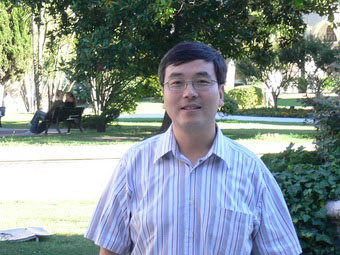
Structure-based taxol modifications for the discovery of new anti-tubulin agents
Fang Weishuo, Chinese Academy of Medical Sciences
Abstract
| Various structure modifications, including C-ring opening and closure, C-3’ and C-2 positions of taxane, were made to find new antitubulin agents effective drug resistant tumors, with the assistance of ligand-tubulin/MT complex structure analysis. Furthermore, based on the recently available taxane-tubulin complex structure solved by us, we designed a series of 3’N-modified taxane as covalent binder and/or preferential binding to curved form of tubulin. Such taxanes were synthesized, tested in vitro and in vivo. Experimental and in silico techniques were used to reveal the structural basis for the interaction of new taxanes with tubulin/MT. |

The influence of doses to nearby normal structures in nasopharyngeal cancer patients
Wen-Shan Liu, Department of Radiation Oncology, Kaohsiung Veterans General Hospital, Kaohsiung, Taiwan
Physiology
Online
Date:
August 19
Time:
10:00 CET

Non-invasive and continuous hemodynamic monitoring - an overview in the context of the Caretaker physiological monitor/Pulse Decomposition Analysis
Martin Baruch, Caretaker Medical LLC

Discovering Exercise Mimetics Using Drosophila melanogaster
Robert Wessells, Wayne State University

Postural control in people with Down syndrome. Applicability of surface electromyography for the study and monitoring of a dance-based physical activity program.
Núria Massó Ortigosa, Universitat Ramon Llull
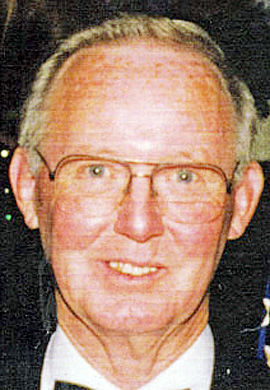
Contradicting 355 years of mosquito larval physiology and respiratory dogma
Herbert Nyberg, New Mountain Innovations
Abstract
| Unquestioned for over 355 years the role of the mosquito larvae siphon and spiracles were cited as the port for breathing, intaking oxygen and expelling metabolic waste. A detailed investigation into acoustic larvicide, the phenomenon of rupturing the dorsal tracheal trunk by applying acoustic energy at resonance with its gas, resulting in larval mortality, revealed significant conflicts with traditional theories. The study identified a previously not described structure, the “Tracheal Occlusion” which is a termination at the posterior limits of the dorsal tracheal trunk and felt chamber interface. This structure was identified as a critical component for the acoustic larvicide to be effective. We identified that the tracheal system is maintained at a high pressure also aided by the tracheal occlusion. The tracheal system being isolated and maintained at high pressure along with experiments demonstrating no obligate need to exchange metabolic gassed with the atmosphere shows the larvae likely depend on the exchange of metabolic gasses primarily from the water environment. |

Presentation of an Audit of the Association of Chartered Physiotherapists in Reflextherapy (ACPIRT) in United Kingdom
Gunnel Berry
Abstract
| Reflextherapy (RT) is an umbrella term used for manual therapies applied as acupressure massage to hands and feet. It is commonly known as reflexology as described by Eunice Ingham in the 1930’s but has since found a worldwide plethora of designated names. The Association of Chartered Physiotherapists in Reflextherapy (ACPIRT) was established as a clinical interest group within the Chartered Society of Physiotherapy in the United Kingdom by Christine Jones, a chartered physiotherapist, in 1994 after the approval of the Chartered Society.Purpose: This presentation shows an audit done of ACPIRT to identify to what extent and in what context RT was used in health care and clinical practice in the United Kingdom and abroad by physiotherapists. The audit compared the members preference of using RT to orthodox physiotherapy methods.Method: 147 members in the United Kingdom and abroad were sent a postal questionnaire including a SAE. 94 members (63.9%) responded; the final audit contained 100 member’s responses which included a previous pilot of committee members.Conclusion: RT was enthusiastically used in a variety of clinical contexts in terms of pain relief, movement and physical facilitation, inducing relaxation and removing stress in physiotherapy contexts. The audit demonstrated regular use of RT by the members, experienced therapists, who recommended RT to be an integrated part of physiotherapy curriculum. |
Dentistry
Online
Date:
August 19
Time:
10:00 CET

Interaction between medicine and dentistry: Current challenges in microbiology and education
Robert Norris, Private Practice
Abstract
| Most traumatic dental injuries occur in the preteen males, with the maxillary central incisor being the most commonly avulsed tooth. When an incisor |
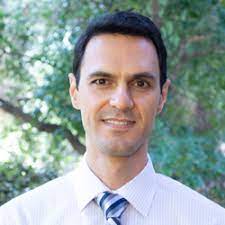
Dental Autotransplantations: A Natural Alternative to Dental Implants
Zaher Jabbour, UCLA School of Dentistry
Day 2 - Berlin
Keynote Session
Online
Date:
August 19
Time:
10:00 CET
Injuries Associated with Police Use of Force
William Bozeman, Wake Forest University (North Carolina, USA)
Abstract
| BACKGROUND: Use of force [UOF] by police can result in serious injuries and fatalities. The risk of significant injuries associated with different force modalities is poorly defined. We sought to determine the incidence of police UOF and compare the likelihood of significant injury with different force modalities. METHODS: A prospective multicenter observational study of all UOF incidents was conducted via mandatory UOF investigations at three midsized police agencies over a two year period. Expert physicians reviewed police and medical records to determine injury severity using a priori injury severity stratification criteria. RESULTS: There were 893 UOF incidents, representing a UOF rate of 0.086%of 1,041,737 calls for service (1 in 1167) and 0.78% of 114,064 criminal arrests(1 in 128). Suspects were primarily young (mean age, 31 years; range, 12–86 years) males (89%).The 1,399 force utilizations included unarmed physical force (n = 710, 51%), CEWs (504, 30%), chemical (88, 6.3%), canines (47, 3.4%), impact weapons (9, 0.6%), kinetic impact munitions (8, 0.6%), firearms (6, 0.4%), and other (27, 1.9%).Among 914 suspects, 898 (98%) sustained no or mild injury after police UOF. Significant (moderate or severe) injuries occurred in 16 (1.8%) subjects. Logistic regression analysis shows these are most associated with firearm and canine use. There was one fatality (0.1%) due to gunshots. No significant injuries occurred among 504 CEW uses (0%; 95% confidence interval, 0.0–0.9%).Of the 355 suspects transported to a medical facility, 78 (22%) were hospitalized. The majority of hospitalizations were unrelated to UOF (n = 59, 76%), whereas a minority (n = 19, 24%) were due to injuries related to police UOF. CONCLUSION: Police UOF is rare. When force is used officers most commonly rely on unarmed physical force and CEWs. Significant injuries are rare. Transport for medical evaluation is a poor surrogate for significant injury due to UOF. |
Mobile health solutions and pragmatic trials: the critical challenge
Marc Tomas, EFESC
Occupational, Toxicological and Environmental Health Hazards of Global Migrant Workers
Timothy Erickson, Mass General Brigham, Harvard Medical School, Harvard Humanitarian Initiative
Abstract
| An increasing portion of global agricultural and industrial workforce is immigrant, undocumented and unprotected. Migrant workers are at increased risk for occupational, toxicological and environmental health hazards. Specifically, they are at risk for chemical and pesticide exposure without proper protection and well as environmental heat and cold-related illness. These workers tend to work in more dangerous industries, and safety training and information are often not available in their native language. They are often not empowered to advocate for improved working conditions because of fear of losing their jobs or deportation. They may have limited access to health care because of their unstable employment situation, low socioeconomic status, and lack of understanding of the health system. Given their front-line role in health care, emergency clinicians have unique responsibilities to recognize, intervene, and care for this vulnerable patient population and to prevent migrant worker abuse. |
EARLY DETECTION OF OBSTETRIC COMPLICATIONS: THEORETICAL, METHODOLOGICAL, AND PRACTICAL CONSIDERATIONS
Gabriel J Escobar
Abstract
| EARLY DETECTION OF OBSTETRIC COMPLICATIONS: THEORETICAL, METHODOLOGICAL, AND PRACTICAL CONSIDERATIONS |



